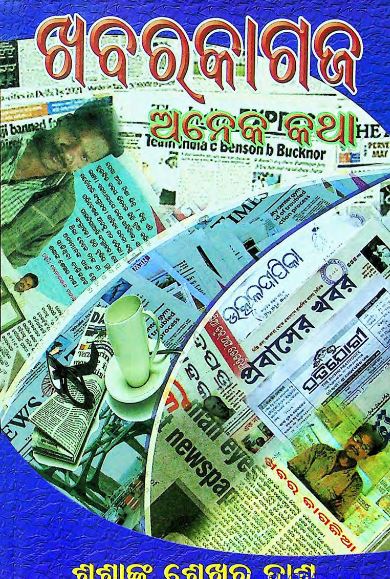Published in 2016, “Khabarakagaj Anek Katha” is a remarkable Odia essay book penned by the erudite scholar and writer, Sasank Sekhar Das, a name synonymous with literary finesse in the Odia language. Delving into the intricate world of newspapers, the book transcends a mere examination of printed news, evolving into a profound discourse that engages with the multifaceted dimensions of media and its ramifications in the societal context.
“Khabarakagaj Anek Katha” translates to “Newspaper: Many Stories,” a title that aptly encapsulates the essence of the book. It is a compilation of essays that weave together the significance, influence, and dichotomies of newspapers in the modern age. The essays are comprehensive in scope and profound in insight, drawing readers into a reflective journey about the evolution, role, and impact of newspapers on society.
The book is divided into several sub-essays, each exploring a unique facet of the newspaper industry. Sasank Sekhar Das adeptly navigates through historical perspectives, contemporary issues, and the transformative nature of newspapers over time. His analytical prowess shines through as he delves into the historical origins of newspapers, tracing their journey from rudimentary news-sheets to sophisticated digital platforms that dominate today’s media landscape.
One of the central themes in “Khabarakagaj Anek Katha” is the newspaper as a vessel of fact and truth. Das underscores the pivotal role of journalism in the dissemination of factual information and the upholding of societal accountability. He eloquently discusses the ethical responsibilities of journalists and the sanctity of truth in reportage. Through thought-provoking narratives, he addresses the challenges journalists face in an era rife with misinformation and sensationalism.
Das’s exploration extends to the transformative influence of newspapers on public opinion and societal change. He examines pivotal moments in history where newspapers acted as catalysts for social and political movements, shedding light on their power to mobilize masses and effect change. His essays skillfully highlight the dual capacity of newspapers to both inform and influence, underscoring the significance of responsible journalism.
The book also delves into the nuanced realm of sensationalism in the media. Das critically assesses the fine line between captivating storytelling and undue sensationalism, advocating for a balanced approach that respects the intelligence of the readership while retaining engaging narratives. He deftly critiques modern media practices, urging a return to journalistic integrity and depth.
“Khabarakagaj Anek Katha” is meticulously researched, offering a blend of empirical data, historical anecdotes, and theoretical insights. Das’s eloquent prose and cogent arguments make the reading experience both enlightening and engaging. His deep reverence for the written word and media ethics resonates throughout the book, making it a compelling read for journalists, scholars, and anyone with a keen interest in media studies.
Sasank Sekhar Das’s contribution to Odia literature through this book is both significant and enduring. “Khabarakagaj Anek Katha” stands as a testament to his expertise and passion for journalism, providing readers with a comprehensive understanding of the vital role newspapers play in shaping perceptions and guiding societal discourse.
In essence, “Khabarakagaj Anek Katha” is not just a book about newspapers; it is a reflective treatise on the profound relationship between media and society, a must-read for those who seek to comprehend the myriad stories that newspapers enfold within their pages.
Books Info
| Books name | Khabarakagaj Anek Katha/ଖବରକାଗଜ ଅନେକ କଥା |
| Author | Sasank Sekhar Das |
| No Of pages | 98 |
| Publisher | Laxmipriya Dolagobinda Dodial Welfair Trust |
| Publication | 2016 |
| Printed At | Krishna Graphics |
| Distributor | NA |

